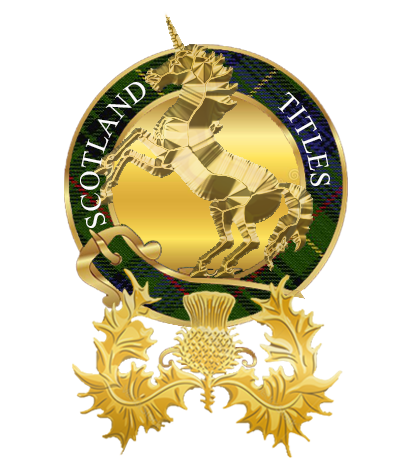Nobility, a term that evokes images of grandeur and tradition, refers to a distinct social class that exists in societies with a formal aristocracy. Ranked just below royalty, the British nobility includes titles such as dukes, marquesses, earls, viscounts, and barons. This guide will explore the intricacies of British nobility, its titles, history, and roles in society.
Understanding Nobility Titles: A Guide to the British Aristocracy

What is Nobility?
Nobility is a social class traditionally enjoying hereditary privileges and honours granted by a monarch or government. These titles are passed down through generations, with privileges varying from country to country and era to era. These honours often include legal rights, lands, and honorary distinctions.


British Nobility Ranks
The British peerage system, part of the country's honours system, consists of five main ranks: Duke, Marquess, Earl, Viscount, and Baron. Let's explore each title in detail.
Duke
The title of Duke is the highest and most prestigious rank in British nobility, originating from the Latin word dux, meaning leader. The female equivalent is Duchess. Dukes and duchesses are formally addressed as "Your Grace."
History and Creation: The first English duke was created in 1337 when Edward III made his eldest son, Edward the Black Prince, Duke of Cornwall. Today, there are 24 non-royal dukedoms and 7 royal dukedoms in the British peerage.
Current Royal Dukedoms:
- Duke of Sussex: Held by Prince Harry.
- Duke of York: Held by Prince Andrew.
- Duke of Cambridge: Held by Prince William, among others.
Marquess
Ranked below dukes, the title of Marquess comes from the French word marquis, referring to the borders (marches) of a country. A marquess's wife is known as a marchioness.
Address: Marquesses are formally styled "The Most Honourable The Marquess of [X]" and informally as "Lord [X]." Their children are addressed similarly to those of dukes.
Historical Significance: The first marquess in Britain was created in 1385. There are currently 34 marquessates.
Earl
The title of Earl is equivalent to the continental title of Count. It comes from the Old English eorl, meaning military leader. The female counterpart is Countess.
Address: Earls are addressed as "Lord [X]," and their wives as "Lady [X]." Their children have the honorary title "Lady" or "Honourable."
History: Earls were originally royal governors with significant authority over their regions. However, their power diminished after the Norman Conquest.
Viscount
Viscounts rank below earls and above barons. The title comes from the Latin vicecomes, meaning deputy count. A viscount's wife is a viscountess.
Address: Viscounts are addressed as "Lord [X]," and their children use honorary titles similar to those of earls.
Creation: The first viscountcy was created in 1440 for John Beaumont by King Henry VI. There are currently 111 viscountcies in the British peerage.
Baron
Barons are the lowest rank in the British peerage. The title comes from the Old Germanic word baro, meaning freeman. In Scotland, they are known as "Lords of Parliament."
Address: Barons are addressed as "Lord [X]," and their wives as "Lady [X]."
Historical Role: Initially, barons were the king's men, bound to provide military service and attend the royal council. Over time, their role evolved, and new baronies were created by writ of summons.

Landed Gentry
The landed gentry includes non-peerage nobles like baronets, knights, dames, and other titled individuals without peerage titles. They rank below the peerage but still enjoy a distinguished status. The term "gentleman" is often used to refer to members of the landed gentry.
Can You Buy a Title of Nobility?
Technically, hereditary titles cannot be bought; they are inherited or bestowed by the monarch. However, certain courtesy titles can be purchased, such as those offered by Scotland Titles, where individuals can and adopt the title of "Lord" or "Lady". It's important to note that these are not hereditary titles and do not confer legal privileges.
FAQs About Nobility
What is the Daughter of a Lord Called?
The title of a lord's daughter depends on the lord's rank. For example, the daughters of a duke, marquess, or earl are styled "Lady [First Name Last Name]."
What is the Wife of an Earl Called?
The wife of an earl is called a countess.
Can You Buy a Lordship?
Yes, you can purchase a courtesy Lord title pack from Scotland Titles, which does not grant hereditary rights but allows the use of the title.
Is a Noble Higher than a Lord?
The term "lord" is often used as a generic title for all members of the peerage. Dukes, marquesses, earls, viscounts, and barons are all nobles and can be addressed as "lord."
What Was the Role of Nobility in Medieval Times?
In medieval times, nobles acted as intermediaries between the peasants and the royal family. They provided land, work, and protection to the peasants while offering military service and financial support to the king.
How Do Nobles Address Each Other?
Nobles address each other using their respective titles. For example, a duke would be addressed as "Your Grace," while other nobles might be addressed as "My Lord" or "My Lady."
Understanding the nuances of nobility titles provides insight into a fascinating aspect of British history and culture. From the highest rank of duke to the esteemed position of baron, each title carries with it a rich heritage and significant historical context. While modern times have seen changes in the roles and privileges of nobility, the titles remain a symbol of tradition and honour.
Can you legally change your Title with a Lordship?
Yes, you can! Anybody who owns land in a Scottish Estate can use the Scottish title of Laird, or the closest English translation of Lord / Lady. We provide you with the paperwork to help you update your new Title into your bank cards, credit cards, drivers licence, and any other document which currently shows your title as Mr or Mrs can be updated to Laird, Lord or Lady.
Includes Fast & FREE Worldwide Shipping

